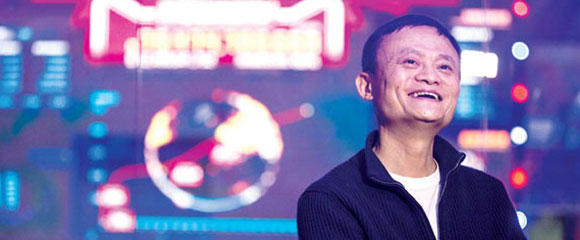Two alternatives for Chinese involvement in gravitational wave research
Updated: 2016-02-16 19:47
By Cheng Yingqi(chinadaily.com.cn)
|
|||||||||||
 |
|
A computer simulation shows how our sun and Earth warp space and time, or spacetime, represented here with a green grid in this image released in Washington February 11, 2016.[Photo/Agencies] |
Chinese scientists are proposing a space gravitational wave detection project that could either be part of the European Space Agency's eLISA project, or a parallel venture.
Scientists from the pre-research group of the Chinese Academy of Sciences disclosed that the group will finish drafting a plan for the project by the end of this year, and submit it to China's sci-tech authority for review.
The draft will include two sets of alternative plans: one is to take a 20 percent share in the ESA's eLISA project; the other is to launch China's own satellites by 2033, which will authenticate ESA's eLISA.
"Gravitational waves provide us with a new tool to understand the universe, so China has to actively participate in the research," said Hu Wenrui, a renowned physicist and a member of Chinese Academy of Sciences.
"If we launch our own satellites, we will have a chance to be the world leader in gravitational wave research in the future. If we just participate in the eLISA project, it will greatly boost China's research capacity in space science, cutting-edge space technology and satellite manufacturing.
"In either case, it depends on the decision maker's resolution and the country's investment," he said.
The Laser Interferometer Space Antenna (LISA) gravitational wave observatory was EAS's cooperative mission with NASA to detect and observe gravitational waves with three satellites arranged in a triangle that sends a laser beam between each other, which was first proposed in 1993.
Since NASA withdrew in 2011 due to a budget shortage, the LISA project evolved into a condensed version named eLISA.
On Dec 2, ESA launched the LISA Pathfinder, a space probe to validate technologies that could be used in the construction of a future full-scale eLISA observatory, scheduled to launch in 2035.
"Currently all operating gravitational wave detection experiments are ground observatories, which can only detect high-frequency gravitational wave signals. A space observatory, without any ground interference or limitation to the length of its detection arms, can spot gravitational waves at lower frequencies," said Wu Yueliang, deputy president of the University of Chinese Academy of Sciences.
On February 11, scientists from the advanced Laser Interferometer Gravitational-wave Observatory in the US confirmed they had detected gravitational waves caused by two black holes merging about 1.3 billion years ago, the first time that humans have directly detected the elusive phenomenon since it was predicted by Albert Einstein's theory 100 years ago.
Related Stories
China plans more gravitational wave research 2016-02-15 00:48
Chinese contribute to detection of gravitational wave -- Tsinghua professor 2016-02-15 00:26
China to launch domestic gravitational wave research project 2016-02-14 15:23
ABCs of gravitational waves 2016-02-14 15:56
Landmark gravitational waves breakthrough welcomed in China 2016-02-13 02:45
Gravitational waves detected a century after Einstein theory 2016-02-12 01:57
Today's Top News
Sichuan opera proves a hit with UK audiences
WeChat to charge fees for digital wallet transfers
Stocks fall in China after holiday week
Putin, Obama discuss Syrian crisis over phone
Global stock swings not caused by China factors
Russian PM warns against 'new cold war' at MSC
Einstein's gravitational waves detected
As Chinese celebrate, rest of world benefits
Hot Topics
Lunar probe , China growth forecasts, Emission rules get tougher, China seen through 'colored lens', International board,
Editor's Picks

|

|

|

|

|

|






